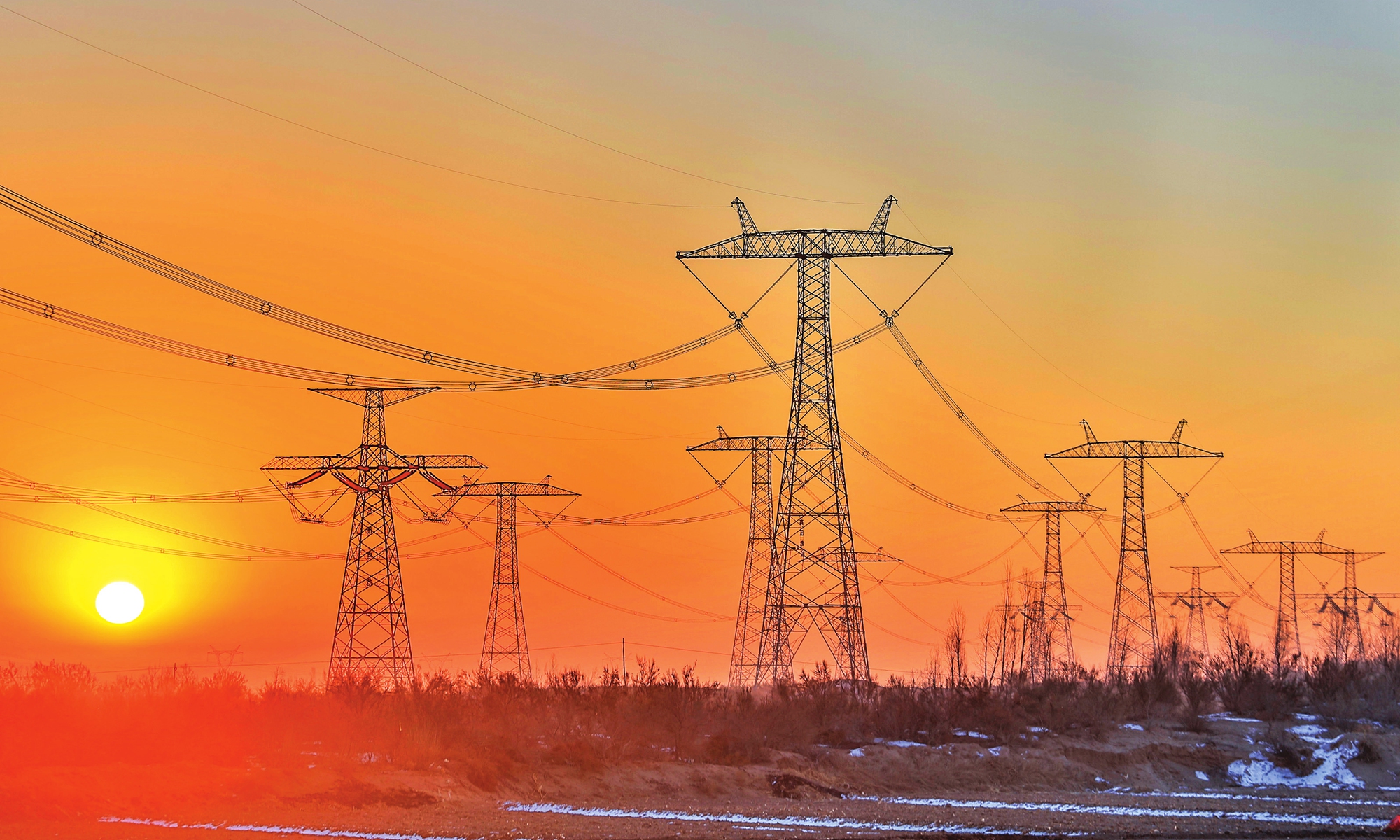
Sunrise over the ultra-high voltage lines of the west-to-east electricity transmission project in Wuwei, Gansu Province, on January 1, 2022 Photo: IC
China commenced the construction of the world's highest ultrahigh-voltage electricity transmission project, from Southwest China's Sichuan Province and Xizang Autonomous Region to Central China's Hubei Province, media outlet the Sichuan Daily reported on Tuesday.
The transmission project will transmit about 40 billion kilowatt hours of electricity including hydro electricity from the upper stream of Jinsha River, which is equivalent to one sixth of the annual power demand of Hubei Province.
The project is estimated to save 17 million tons of coal and about 34 million tons of CO2 emissions, as well as helping produce several billions of yuan of manufacturing across a number of industries and create over 10,000 jobs.
The project starts from the Baiyu country at the border of Sichuan and Xizang, and runs to Huangshi in Hubei with a total length of 1,901 kilometers crossing five provinces. The high altitude of the project is also a challenge to construction and the electricity transmission equipment.
As one of vital phases of China's west-to-east power transmission program, the construction of the project will enlarge the number of ultra-high voltage electricity transmission projects starting from Sichuan to seven nationwide.
China's west-to-east power transmission program seeks to balance the country's electricity supply and demand in different regions. It transmits surplus electricity in western regions rich in hydropower resources to the country's eastern and southern manufacturing powerhouses.
South China's Guangdong has the biggest electricity demand among all provinces in China because of its large-scale industrial production and large population. Eastern provinces such as Shandong and Jiangsu also have a higher power demand.
Sichuan is home to the world's second-largest hydropower plant, the Baihetan hydropower plant. The Baihetan-Jiangsu project, which entered operation in July 2022, is accelerating the transformation of Sichuan's natural resources into tangible economic outcomes.
Global Times




